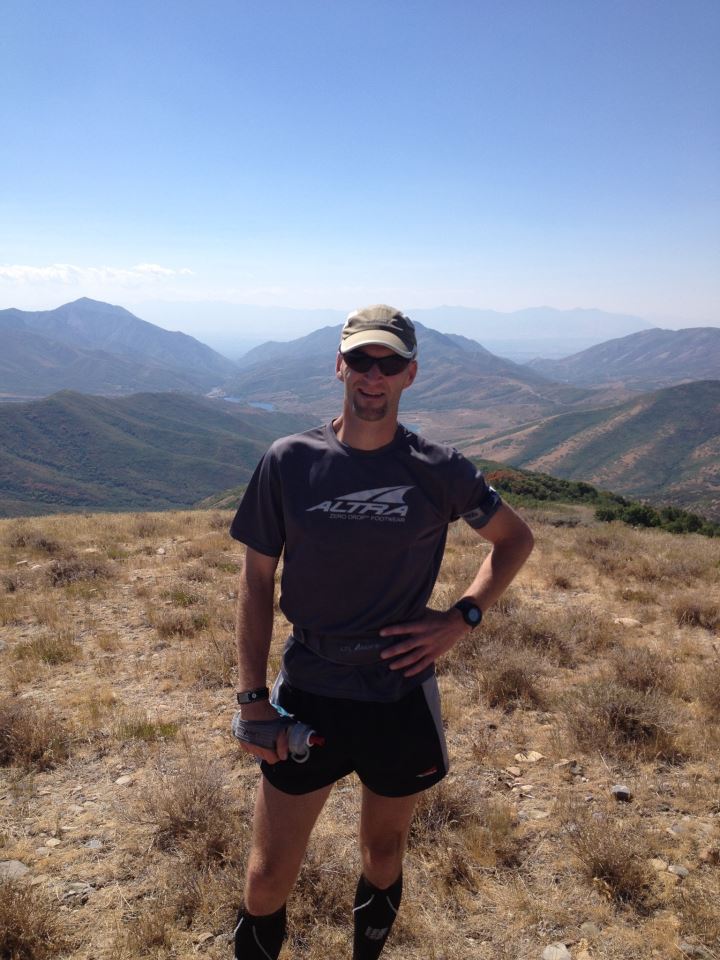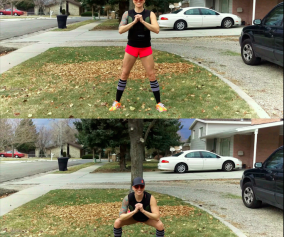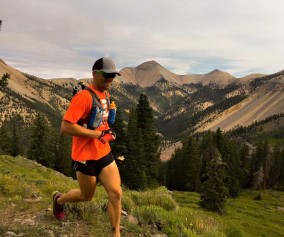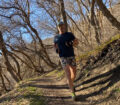Note that I didn’t put ‘run a faster ultra’ in the title. This article isn’t about making you faster; it is about helping you run better and more efficiently so that you can avoid the unfortunately accepted concept of “slog the last quarter of the race”. You don’t have to do that. You can actually finish strong and feel good doing it. And you can recover quicker and get back on the trails faster. Here are five tips for helping you run a better ultra.
Tip 1: Nutrition – Train Like You Race
How to fuel is a widely discussed concept. The one universal truth is that it is different for everyone. Some people can run 100 miles on just gels. Some can’t eat them, at all. I’m not going to tell you how and what to eat, I’m simply going to tell you that whatever you plan to eat in a race you need to be eating during training. While you can get away with fueling sparingly in your shorter runs it is imperative that you mimic your race eating habits for any training run longer than two hours. If you eat real food like chips or fruit during an ultra then you need to plan to take those items with you on your long runs. Doing so will make it so there are no surprises for your stomach on race day.
Tip 2: Pace – Do NOT Race Like You Train
I’m a big believer in training hard and pushing myself to my limits on a regular basis. Threshold training is great for building muscle and cardiovascular stamina. However, you can’t expect yourself to run at that same pace in the middle of a 50 miler. Here’s what it boils down to:
Start slow: if you feel like you are running at a feel-good pace, it’s probably too fast.
Don’t power through that first big hill just because you feel good. It will come back to bite you later.
Bombing downhills will be your downfall. Let the pace open up, but don’t shred your quads.
Tip 3: Aid Stations – Don’t Linger
While running my first 100k I was told by another runner that he was coached to stay an extra minute or two at each aid station to make sure that he was ready to go for the next section. My concern was that wouldn’t those minutes add up? While I ran an ok race I made an effort to really limit my aid station time. I beat that other racer by 5 hours. I’ve frequently wondered how much of that time was in aid stops. Making a conscious effort to limit aid station stops will greatly improve your ultra times. Don’t get me wrong, do what you need to do, but don’t linger. And if at all possible, don’t sit. Only sit to change shoes or fix blisters, etc. If you can avoid it, don’t sit to rest, that’s what walking is for. In the spirit of this article, this isn’t about running a faster race. Remember, the longer you are on the course the more impact that time will have on your body. Getting done just a little quicker means you get longer to rest and recover.

Scott's sub-30 hour finish at the 2011 Wasatch 100 was lost in this chair. He'll be the first to admit it.
Tip 4: Carry What You Need
I ran a 50k this year that had aid stations every three miles. I was shocked to see nearly half of the competitors wearing hydration packs or carrying two handhelds. The weather was perfect for racing, not too hot or cold and no chance of rain. Why on earth would they need so much gear? Keep it basic, slim it down and carry only what you need to get you to the next aid. In big races where you might be a few hours between aid stops it is certainly appropriate to carry a hydration vest or waist pack, but in races where you have frequent aid stops it will just wear you down. Every hydration company now-a-days makes belts, packs, and bottles for every distance and every need. Whether a waist pack or handheld you can be appropriately geared up for optimal performance.
Tip 5: Stretch
Yes, even in the middle of a race, take time to stop and stretch. I make an effort to stretch my legs at nearly every aid station once I get significantly far into an ultra. In a 50+ miler I’ll make a conscious effort to quickly bend over and stretch my back and hamstrings at aid stations after 30 miles or so. It only takes a few seconds, but the benefits are well worth it. Stretching keeps you loose and helps you to relax. Once you get tight your posture starts to weaken and that’s when you are at more risk for injury. Staying relaxed allows you to run better and recover faster.
Bonus Tip: No Fires
Fires are bad. They are magnets for long stops and potential DNFs. If you’re cold, get moving, but avoid fires like the plague. Fire BAD, finish line GOOD.



















